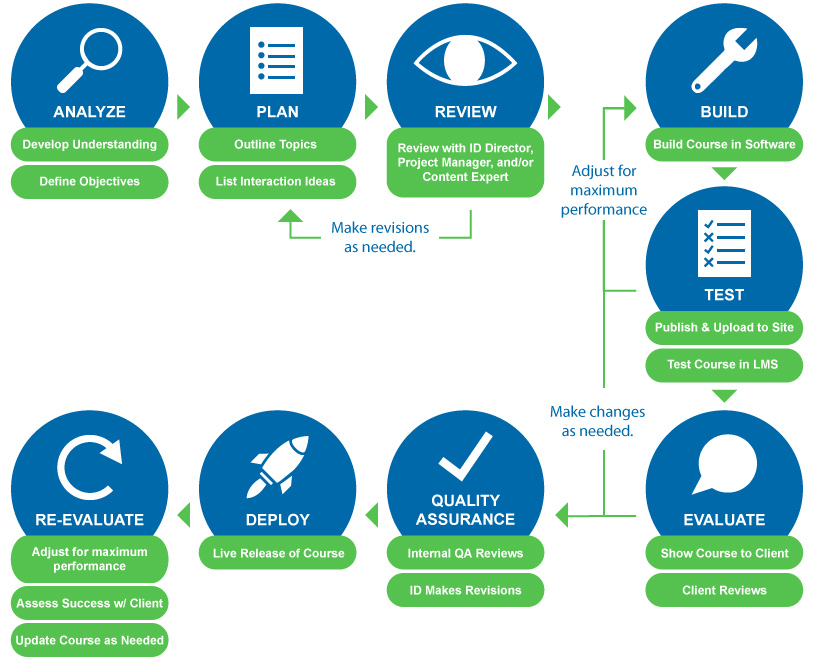Flexibility for your educational needs
Say goodbye to boring and ineffective courses that have you “click next.” At CypherWorx, we have a creative team of award-winning writers, designers, and developers available to help build out your custom courses. Our team works closely with you to identify what you need to help your team succeed.
Then, we create learning solutions designed to engage your team to not only learn, but also apply new knowledge for real results. We partner with you to develop engaging, cost-effective solutions that foster lasting behavior change and deliver measurable results.

Gain access to our comprehensive pre-built courses.
White label our pre-built courses with your branding, policies, and more.

Partner with us to create custom courses tailored to your specific needs.
Our Process
Our agile approach, built on a foundation of instructional design and adult learning theories, combines imagination, innovation, and efficiency to create effective and engaging interactive content that meets our partners’ learning needs. Here’s how we do it:

Methodologies
We believe that instructional design is an interactive and iterative process and always keep in mind that what we are developing is a product that helps a learner learn. Our agile instructional design approach has been built on a combination of the following instructional design and learning theories.
Accessibility
Courses designed for everybody
We prioritize inclusivity by ensuring our online courses are accessible to individuals with diverse abilities. Through meticulous design and adherence to accessibility standards, we strive to empower learners of all backgrounds to engage with our content seamlessly.










